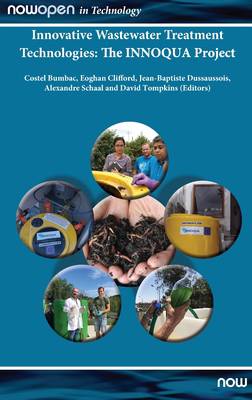
- Afhalen na 1 uur in een winkel met voorraad
- Gratis thuislevering in België vanaf € 30
- Ruim aanbod met 7 miljoen producten
- Afhalen na 1 uur in een winkel met voorraad
- Gratis thuislevering in België vanaf € 30
- Ruim aanbod met 7 miljoen producten
Zoeken
Innovative Wastewater Treatment Technologies - The Innoqua Project
€ 125,95
+ 251 punten
Omschrijving
Globally, poor hygiene and sanitation contribute to more than 1,000 daily deaths from diarrhoeal diseases among children under the age of 5, while two thirds of urban wastewaters are discharged without treatment into lakes, rivers and coastal waters. Across Europe the percentage of the population connected to wastewater treatment plants varies from 14% to >99% with many reliant on unsuitable decentralised sanitation systems or no wastewater treatment at all. With less than a decade left to achieve the 2030 sanitation targets as set out in the Sustainable Development Goals, there is an urgent need to develop new treatment solutions that can be rapidly deployed to meet the needs of growing urban and peri-urban populations, together with under-served rural communities. This book discusses decentralised wastewater treatment and the role of nature-based solutions within the context of the twenty-partner international INNOQUA project. INNOQUA set out to develop and demonstrate a suite of modular, low cost, decentralised solutions that use the combined capabilities of earthworms, bacteria, Cladocera and micro-algae to deliver nature-based primary, secondary and tertiary treatment - followed by UV disinfection. Design and operation principles are outlined, together with performance data and practical feedback from pilot and demonstration facilities situated in eleven countries from Ecuador to Scotland and India. Barriers and drivers towards more widespread uptake of these technologies are also examined, alongside an exploration of existing markets for nature-based sanitation in the Global South.
Specificaties
Betrokkenen
- Uitgeverij:
Inhoud
- Aantal bladzijden:
- 400
- Taal:
- Engels
- Reeks:
Eigenschappen
- Productcode (EAN):
- 9781680837803
- Verschijningsdatum:
- 31/08/2021
- Uitvoering:
- Hardcover
- Formaat:
- Genaaid
- Afmetingen:
- 156 mm x 234 mm
- Gewicht:
- 703 g

Alleen bij Standaard Boekhandel
+ 251 punten op je klantenkaart van Standaard Boekhandel
Beoordelingen
We publiceren alleen reviews die voldoen aan de voorwaarden voor reviews. Bekijk onze voorwaarden voor reviews.










